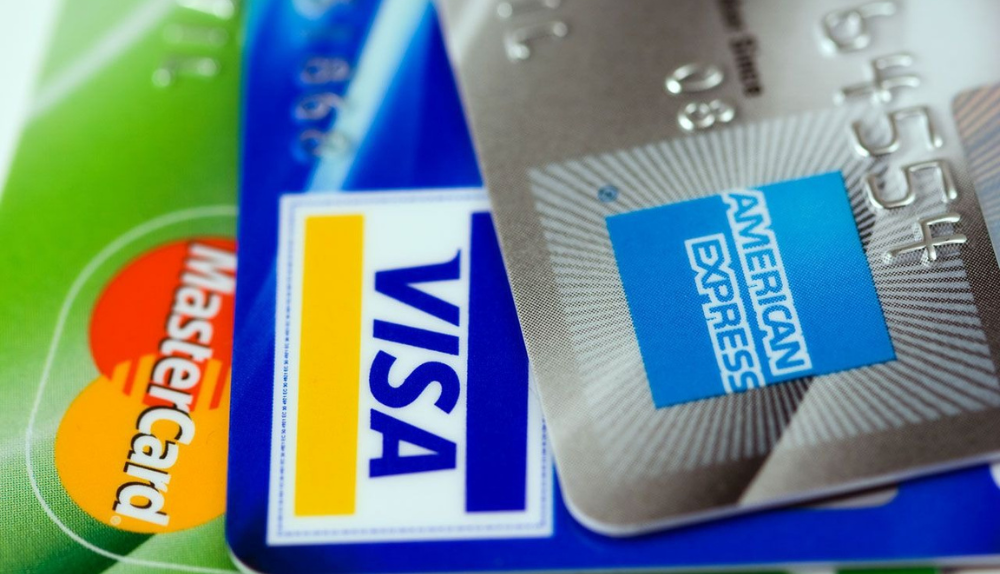
What Is A Credit Card Authorization Form?
- 31st May, 2023
- | By max
- | Uncategorized
A credit card authorization form is a form that allows a third party to charge a specific amount to an individual’s or a business’s credit card. This form is typically used when the credit card cannot be presented at the time of the transaction, such as for online purchases or recurring payments. The cardholder fills out the document, providing the necessary information, such as the credit card number, expiration date, and security code needed to process a payment.
Purpose and Usage of Credit Card Authorization Form
The main purpose of a credit card authorization form is to provide consent for a transaction to occur without the need for the cardholder to be present physically. It permits the merchant to charge the cardholder’s account, assuring them they’ll receive payment. Businesses often use these forms for recurring payments, such as monthly subscriptions, or when processing a large order that requires a deposit or multiple payments over time. These forms also prevent fraudulent transactions, as they require the cardholder’s signature, which can be verified.
Key Elements of a Credit Card Authorization Form

Cardholder’s Information
The cardholder’s information section of a credit card authorization form typically includes the name of the cardholder, their billing address, and contact information such as phone number or email address. This information is crucial to validate the cardholder’s identity and helps prevent any potentially fraudulent transactions. The cardholder must fill out this information accurately and completely to avoid any issues with payment processing.
Credit Card Information
The credit card information section requires details about the credit card used for the transaction. This includes the credit card number, the card’s expiration date, and the CVV (Card Verification Value), a 3 or 4-digit number usually found on the back of the card. This information allows the merchant to charge the appropriate card and also helps to validate the legitimacy of the card.
Transaction Details
In this section, details about the transaction are outlined. This typically includes the amount to be charged, the date of the transaction or schedule of transactions in case of recurring payments, and a description of the goods or services or products being purchased. This information clearly explains the charge and when it will be processed.
Authorization Statement and Signature
The authorization statement is a crucial part of the form, where the cardholder acknowledges and agrees to the charges being made to their credit card. It is a statement that signifies the cardholder’s understanding of the transaction and their consent for processing it. Following the statement, the cardholder is required to sign the form. The signature safeguards the merchant, showing that the cardholder has agreed to the transaction. It’s an essential element for the validation and legality of the form.
Types of Credit Card Authorization Forms
One-Time Credit Card Authorization Forms
One-Time Credit Card Authorization Forms are used when a single, specific payment needs to be made. These are common in online purchases, where the credit card owner may not be physically present but authorizes the merchant to charge their card once for a particular amount. The form contains the necessary details as any other authorization form, including cardholder information, card details, transaction information, and the cardholder’s signature. Once this one-time transaction has been processed, the form should be securely dumped to prevent cardholder information misuse.
Recurring Credit Card Authorization Forms
As the name suggests, recurring Credit Card Authorization Forms authorize multiple payments over a certain period. These are common for businesses offering subscription-based services, such as software, gym memberships, or monthly utilities. The form includes information about the frequency of payments (for example, monthly or weekly), the amount to be charged per payment, and the duration for which the authorization is given. The recurring authorization form ensures the business can charge the customer’s credit card as agreed upon without seeking approval for each payment. This form typically remains valid until the subscription end or the cardholder revokes the authorization.
The Process of Using a Credit Card Authorization Form
Filling Out the Form
Using a credit card authorization form starts with the cardholder filling out the form. This involves entering all the necessary details accurately. This includes the cardholder’s personal information, such as their name and address; credit card details, like the card number, expiration date, and CVV; as well as information on the transaction, such as the amount to be charged and the description of the product or service being purchased. Finally, the cardholder must sign the form indicating their consent for the transaction.
Obtaining Authorization
Completed and signed from it is submitted to the merchant or service provider. The merchant or their payment processor then communicates with the cardholder’s bank or credit card company to obtain authorization for the transaction. This is done by verifying the information on the form, ensuring sufficient funds are available, and confirming that the card has not been reported as lost or stolen. Once this is done, a unique authorization code is generated, proving the transaction has been approved.
Processing the Payment
Once authorization has been obtained, the merchant can then process the payment. This involves debiting the agreed-upon amount from the cardholder’s account and transferring it to the merchant’s account. For one-time transactions, the payment process ends here. However, for recurring transactions, this process will be repeated according to the schedule outlined in the form until the cardholder revokes the authorization or the agreed-upon duration has ended. After the payment has been processed, it’s important for merchants to securely store or dispose of the authorization form to protect the cardholder’s sensitive information.
The Benefits of Using a Credit Card Authorization Form
One of the significant benefits of using credit card authorization forms is the protection they offer against chargebacks and fraud. A chargeback occurs when customers dispute a charge and request their bank reverse the transaction. By having a signed authorization form, a merchant has proof that the cardholder approved the transaction, which can be used to dispute any potential chargebacks. In addition, these forms also help to prevent fraud by ensuring that the cardholder has knowingly agreed to the transaction and that the card details are not being used without their consent.
Convenience and Efficiency
Credit card authorization forms also offer high convenience and efficiency for customers and businesses. It saves customers from repeatedly providing their card details for recurring transactions. For businesses, it simplifies the payment process, especially for recurring charges, and helps ensure a smoother, more efficient operation by reducing the administrative burden of seeking payment authorization for each transaction.
Improved Cash Flow
By allowing merchants to process payments on time, credit card authorization forms can also help improve a business’s cash flow. This is particularly true for recurring payments, where a signed form ensures the business can collect payments regularly. This predictability in cash inflow can significantly aid in budgeting and financial planning for the business.
Risks and Downsides Associated with Credit Card Authorization Forms
While credit card authorization forms offer numerous benefits, they also come with certain risks, the foremost being data security concerns. These forms contain sensitive information such as the cardholder’s personal and credit card information. If this form falls into the wrong hands, it can lead to identity theft or fraudulent transactions. Therefore, businesses must ensure robust security measures to protect this information in terms of secure storage and disposal of these forms once they are no longer needed.
Possible Misuse
Another risk associated with credit card authorization forms is their potential misuse. These forms can be used to make unauthorized transactions if not handled correctly. This is mainly a concern when there’s a recurring payment authorization, as the form grants permission to charge the credit card for an extended period. Businesses must be diligent in ensuring they only charge the agreed-upon amount and do so only for the duration specified in the form.
Compliance with Credit Card Company Policies
Credit card companies have strict guidelines and requirements for merchants who accept credit card payments. This includes rules about handling, storing, and disposing of credit card information. Failing to follow these protocols can lead to penalties, loss of the ability to accept credit card payments, and in some cases, legal action. As such, businesses using credit card authorization forms must ensure they are well-versed in these policies and adhere to them strictly.
Guidelines and Best Practices for Handling Credit Card Authorization Forms
Ensuring Data Security
Businesses using credit card authorization forms are responsible for protecting the sensitive data these forms contain. This includes implementing physical solid security measures, such as storing the forms in a secure location with limited access and digital security measures, such as encryption if the data is stored electronically. Regular audits must be carried out to ensure these security measures are effective and up-to-date. Additionally, employees with access to these forms should be trained on data protection and confidentiality.
Following Payment Card Industry Data Security Standard (PCI DSS) Compliance
Businesses should adhere to the Payment Card Industry Data Security Standard (PCI DSS) to safely handle credit card information. The PCI DSS established these requirements, which include upholding a secure network, safeguarding cardholder data, maintaining a vulnerability management programme, implementing robust access control measures, routinely testing and monitoring networks, and keeping an information security policy. Failure to comply with PCI DSS can result in severe penalties, including fines and the loss of the drive to process credit card transactions.
Retention and Disposal of Authorization Forms
The length of time a business should retain credit card authorization forms depends on the nature of the transaction. Still, they should generally be kept for at least a period that covers the cardholder’s right to dispute the transaction. Once the necessary retention period has passed, the forms should be disposed of securely to ensure the data cannot be retrieved and misused. This could involve shredding physical forms or securely erasing digital data. Businesses should have clear policies regarding the retention and disposal of these forms and ensure all employees are aware of and accept these policies.
Final Thoughts
Credit card authorization forms play a critical role in today’s business transactions, offering merchants a reliable and efficient way to charge customers, especially when the customer isn’t physically present. They bring many advantages, like protecting against chargebacks, ensuring operational efficiency, and enhancing cash flow predictability. However, alongside these advantages come significant responsibilities. Businesses must employ stringent data security measures, comply with PCI DSS guidelines, and implement proper retention and disposal practices for these forms. By doing so, businesses can utilize the full benefits of credit card authorization forms while mitigating potential risks, ultimately providing customers with a secure and seamless payment experience.
